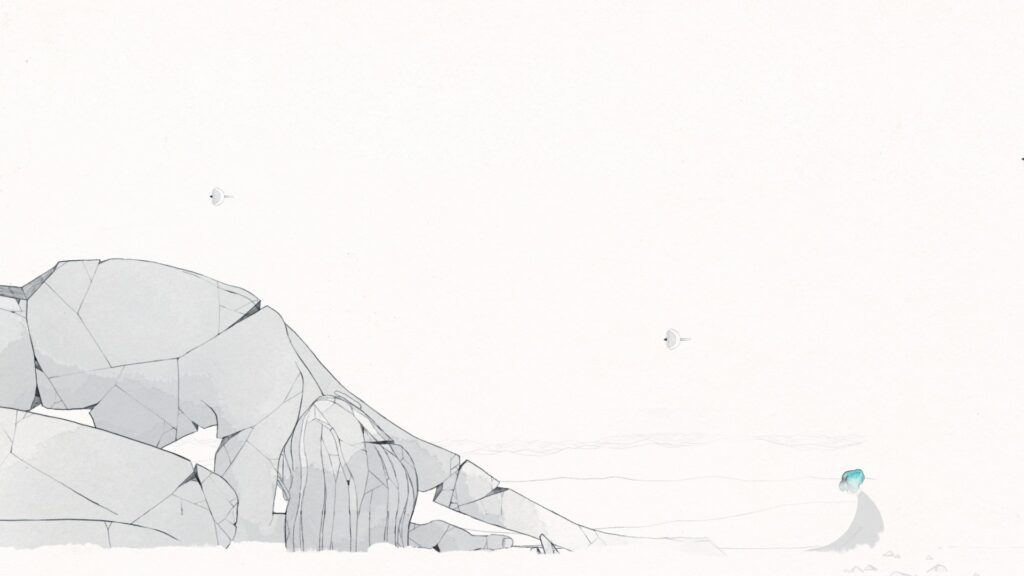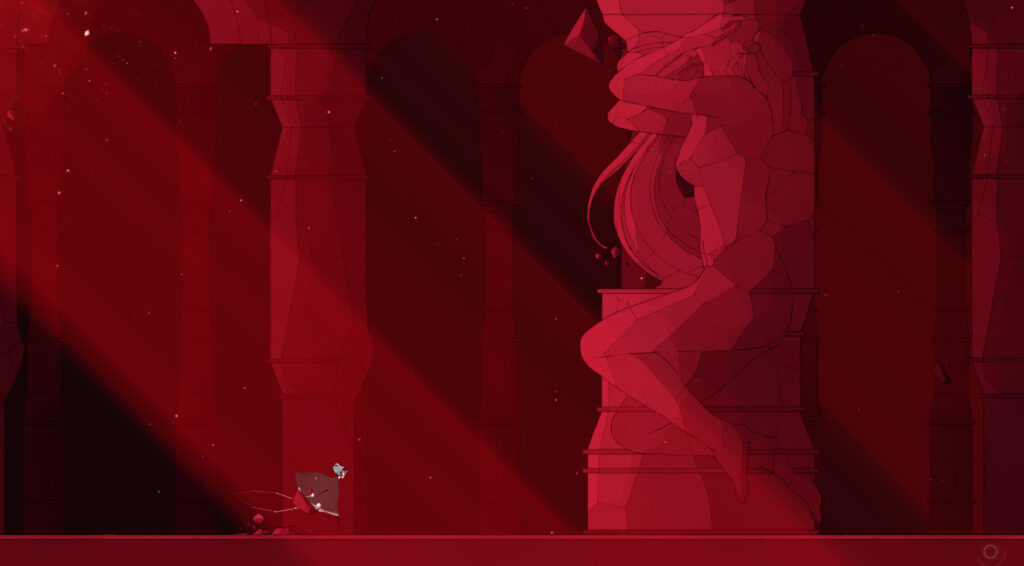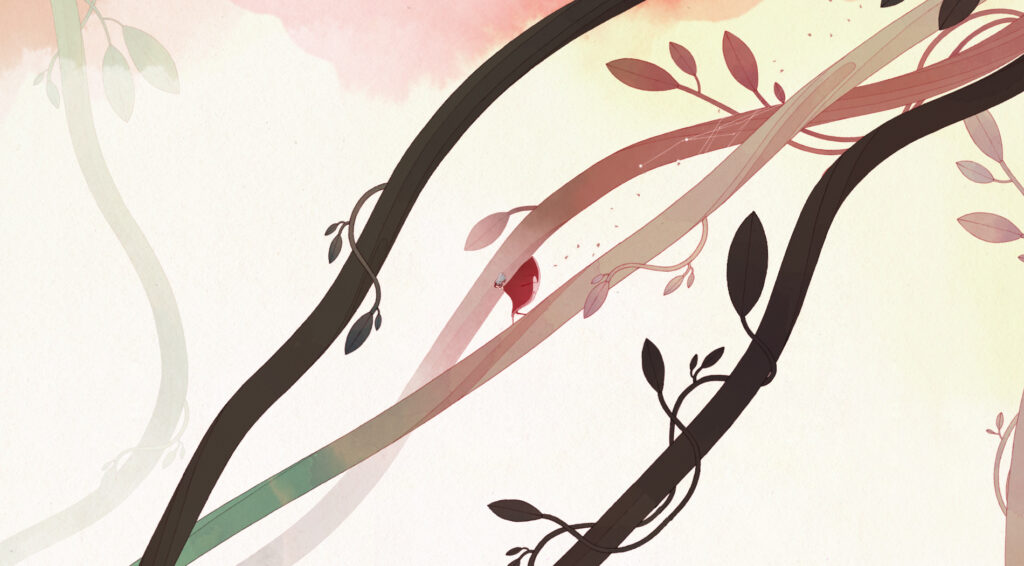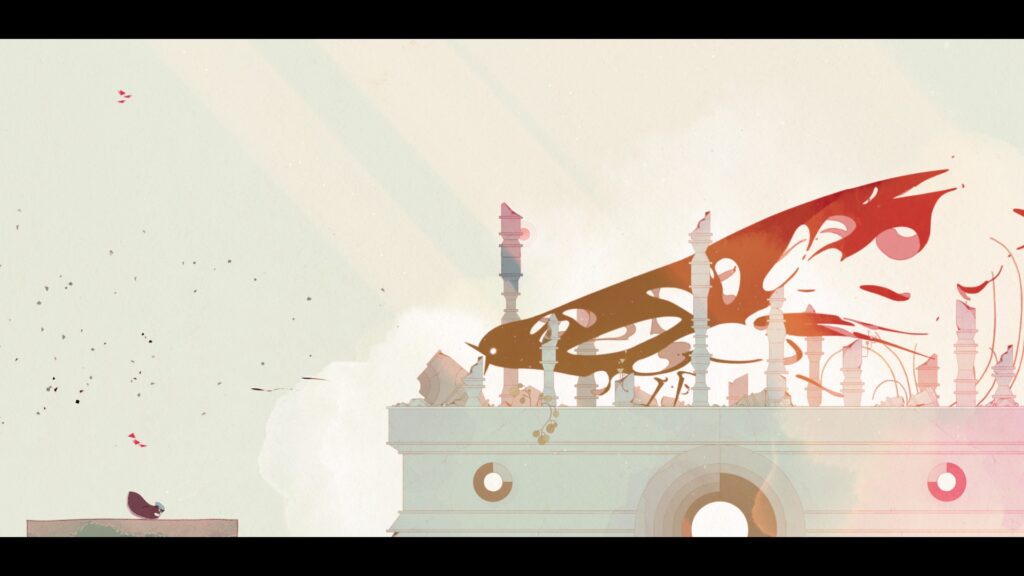In the previous instalment, it was highlighted that Nomada Studios incorporates The Five Stages of Grief into Gris. In this second portion, we break down and exemplify how this psychological model was carefully woven into the game.
For one, Nomada Studios made it so that there is a hidden quest within GRIS. The very first achievement — aptly named Denial— is accomplished at the very start of the game. Right as the player gains control of the character, they have to navigate Gris into the opposite direction of where she is supposed to go. This mimics the denial stage of grief, where an individual actively rejects the situation and turns away from it.

The levels also imitate the bereavement process; at the start of any tragedy, when overcome with grief, one naturally feels almost sluggish and devoid of any motivation to do anything. Gris’ slow trudge at the beginning of the game encapsulates this perfectly. Yet, as the game progresses, Gris gains several different abilities that enable her to complete increasingly complex tasks.
One step at a time, and never before she is ready.
Besides this, however, another facet of psychology, therefore, comes into play here: colour.
In Denial, the game is covered in a white cast— as if to portray that the beginning is merely a blank canvas. It then implies that colour needed to be added in order to recreate the world Gris fell from.
Hence, following the gaining of new abilities is also the return of colour, one shade at a time. It is important to note what order these colours appear — with red being the first — which coincide with the next stage: anger.

If anger were a colour, it’d be red.
Red incidentally, in colour psychology, is the most likely to provoke any sort of emotion. As is most visible of colours due to its wavelength, designers have deigned to use red as a warning. Over time, red thus had come to be associated with danger and aggression.
Red can also mean mourning in certain parts of Africa and almost paradoxically, a lucky colour in China. While a lot of these perceptions and associations with the colour red are mostly cultural and learnt, it does not change the fact we do perceive red strongly. It is therefore fitting for this stage as the game begins to get going.
While Gris revolves around the Kübler-Ross model, the levels are actually named after the colours with Red being the first. In the red stage, you will encounter a sandstorm that essentially overtakes the entire screen in a haze; it is as if the player is literally blinded with rage.
It is also in this stage where you gain the ability called ‘heavy’, which allows you to essentially smash and break things. Anger goes hand-in-hand with aggression and it is these little details that make the game even more vivid.
As the player smashes around rocks, a minor character appears out of the ruins and scatters away at the sight of her and hides— almost as if afraid. You can only progress to the next part of the game after this little interaction. This little cutscene might seem insignificant, but its inclusion implies a moral lesson; t seems to there are consequences to acting out on one’s anger

The next level is Green and it comes hand-in-hand with the next stage of grief: bargaining. What you then will notice unlike the previous two stages is that there is no just one colour, by a mixture of reds and greens.
At first, players might brush this off as something natural. However, the decision to blend the complementary greens and reds is not just a stylistic choice but a narrative one. Later in the depression stage, when blue returns to the world, it will dominate the screen the same way red did.
The most striking difference here is that depression is further down the line than anger; at this point in time, only red was available. It is only natural for red to be so domineering and oppressive. For the screen to be so overwhelmed with blue—though smidgens or reds and greens will still appear— indicates that the blend of greens and reds in the bargaining stage to be something more unique.
What does this then mean for the stage of bargaining?
This bit is less about the actual bargaining like the haggling you see at the market but more about making peace with the situation; wrestling your anger under control. This is why you still see red playing a huge role in not just the background, but also representative of the actionable trees that one needs to overcome.
Green is the colour of renewal, compassion, harmony and self-control. Think of the phrases ‘the grass is greener on the other side’ or ‘greener pastures’. It is therefore fitting that green is used at this stage when the game introduces a friend. Only by being compassionate and helping your companion will you earn their trust in which will help you to complete the puzzles in this section.
The red, however, shows that anger has not quite yet been overcome; still playing a large role in the stage of bargaining. What Gris is trying to tell us here is that these five stages of grief are not exactly mutually exclusive emotions. Neither are they linear. Grief is a very complex emotion and process. Working through it requires reflection into ourselves, overcoming our own fears but also recognising that help is there should you need it and that we are not alone.

In the previous level, to unlock the anger achievement, the player had to smash a bunch of pottery in which doing so, broke the barrier which contained these black birds in Gris’ reflection.
These birds, though seemingly random at that point in time, will prove to be a monumental character. They will later combine into huge creatures that pose an obstacle in Gris’ path – such as the huge black bird above, whose shrill cries quite literally blows Gris away.
It is theorised that these birds are symbolic of the self-doubt that we all are capable of. These first appear at the late part of the anger stage; typically when an individual tends to ascribe blame to other parties. In the bargaining stage, thoughts of how the individual could have avoided the tragedy plague their minds. It is therefore fitting that these manifestations, therefore, appear here. The moral, however, that while these doubts seem like huge obstacles, they are a natural part of us that also helps to elevate our sense of growth. Without the bird, we would not have been able to progress to the next stage: depression.
